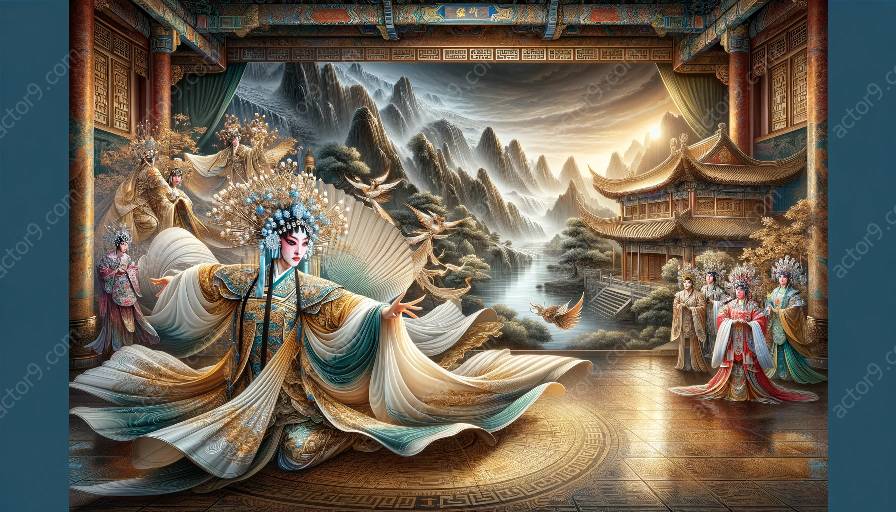Known for its vibrant costumes, elaborate makeup, and unique vocal techniques, Peking Opera is a traditional Chinese theatrical art form that has captivated audiences for centuries. At the heart of this enduring cultural heritage lies the importance of community engagement and education in preserving and promoting the art of Peking Opera.
Understanding Peking Opera Techniques
Peking Opera encompasses a variety of performance elements, including singing, acting, martial arts, and acrobatics. The distinctive vocal techniques, known as lüju and kouji, require extensive training and mastery. The elaborate makeup and intricate costumes are integral to the storytelling, and each character's appearance conveys specific traits and emotions.
Exploring Acting Techniques in Peking Opera
The performance style of Peking Opera involves a unique blend of acting techniques, characterized by exaggerated movements, symbolic gestures, and stylized expressions. The actors employ the art of chang (singing), nian (speaking), zuo (acting), and da (fighting) to convey the depth of emotion and character development.
Community Engagement and Education
For the preservation and dissemination of Peking Opera, community engagement and education play a crucial role. With its rich cultural significance, Peking Opera holds the power to bridge communities and foster cross-cultural understanding.
Community Outreach Programs
Community outreach initiatives bring Peking Opera performances and workshops to diverse audiences, promoting inclusivity and cultural exchange. These programs provide a platform for interaction and appreciation, igniting interest in the art form.
Collaborative Workshops and Master Classes
Engaging the community through collaborative workshops and master classes enables aspiring performers to delve into the intricacies of Peking Opera techniques. Participants gain insights into lüju, kouji, character portrayal, and the nuanced movements that define Peking Opera.
Interactive Educational Events
By organizing interactive educational events such as lectures, demonstrations, and immersive experiences, institutions can deepen the community's understanding of Peking Opera. Through active participation, audiences develop a profound connection to this ancient art form.
Cultural Preservation and Promotion
Community engagement and education serve as pillars in the preservation and promotion of Peking Opera as a cherished cultural heritage. By fostering appreciation and knowledge, these initiatives ensure the continued relevance and vitality of this traditional art form.
Empowering the Next Generation
Through educational programs in schools and community centers, the next generation of performers and audiences can become ambassadors for Peking Opera. By instilling a passion for this art form, the legacy of Peking Opera is entrusted to the hands of future custodians.
Public Performances and Festivals
Celebratory events and public performances offer immersive experiences that showcase the beauty and dynamism of Peking Opera. Engaging the community in celebratory festivals fosters a sense of cultural pride and unity.
Conclusion
Community engagement and education form the cornerstone of preserving the rich legacy of Peking Opera. By embracing the cultural significance and technical mastery of Peking Opera, communities can appreciate and perpetuate this timeless art form for generations to come.













































